Medical workers shall win the race between injection and infection
Vaccines finally reached Hong Kong in mid-February after several waves of COVID-19, signaling a new dawn of hope in the fight against the pandemic. Dr Raymond Lai, Chief Infection Control Officer of the Hospital Authority (HA), believes that the vaccination campaign is a turning point in the battle but healthcare workers must lead the way. “The challenge that we face at this critical juncture is to increase the vaccination rate among our colleagues within the HA, which will be a crucial factor in the coming months,” he says.
Vaccinating HA staff can build a protective barrier for the public hospitals. “The virus may have hidden victims who increase the risk of mass transmission. That has been one of the major characteristics of this pandemic,” Dr Lai explains. “Many of the patients we take care have poor immunity or chronic illnesses. They are subject to higher mortality rate and more severe symptoms if they get infected in hospitals.”
Vaccinating HA staff can build a protective barrier for the public hospitals. “The virus may have hidden victims who increase the risk of mass transmission. That has been one of the major characteristics of this pandemic,” Dr Lai explains. “Many of the patients we take care have poor immunity or chronic illnesses. They are subject to higher mortality rate and more severe symptoms if they get infected in hospitals.”
Preventing deadly hospital outbreaks
Vaccination can also help prevent the spread of Variants of Concern (VOCs). Dr Lai cited the lessons learned from outbreaks originating in hospitals – known as nosocomial infection – in Taiwan and Singapore. One hospital in Singapore failed to detect a male patient infected with a variant that originated in India in late April, resulting in more than 40 people being infected, including at least 23 patients and nine staff. “The hospital eventually had to close for two weeks to deal with the nosocomial infection.” He says. “The virus is lethal, and the infectiousness of the variant is 50 to 60% higher than those of the previous coronaviruses. The consequences can be very severe once the nosocomial infection has broken out. We cannot accept such a situation in Hong Kong. We hope that our colleagues will lead by example by getting vaccinated, protecting themselves and others from this virus. We must work together with all sectors to achieve a 70% vaccination rate as we work towards herd immunity in the society.”
Dr Lai dismisses the misplaced views that vaccination cannot protect people against VOCs or that vaccination is not necessary as long as healthcare workers wear appropriate personal protective equipment (PPE). “Several studies show that the BioNTech vaccine provides nearly 90% protection against VOCs from the UK and South Africa,” he points out. “Besides, PPE is not always fully protective. If it is damaged or not worn properly, there is still a risk of infection.” He adds that receiving the vaccination combined with wearing proper PPE provided double protection and the risk of infection would be greatly reduced.
Dr Lai dismisses the misplaced views that vaccination cannot protect people against VOCs or that vaccination is not necessary as long as healthcare workers wear appropriate personal protective equipment (PPE). “Several studies show that the BioNTech vaccine provides nearly 90% protection against VOCs from the UK and South Africa,” he points out. “Besides, PPE is not always fully protective. If it is damaged or not worn properly, there is still a risk of infection.” He adds that receiving the vaccination combined with wearing proper PPE provided double protection and the risk of infection would be greatly reduced.
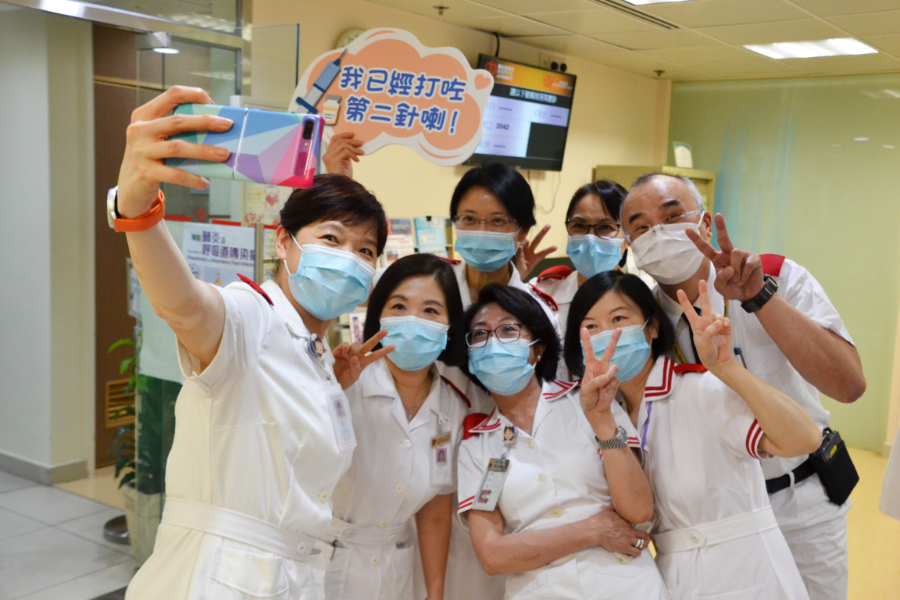
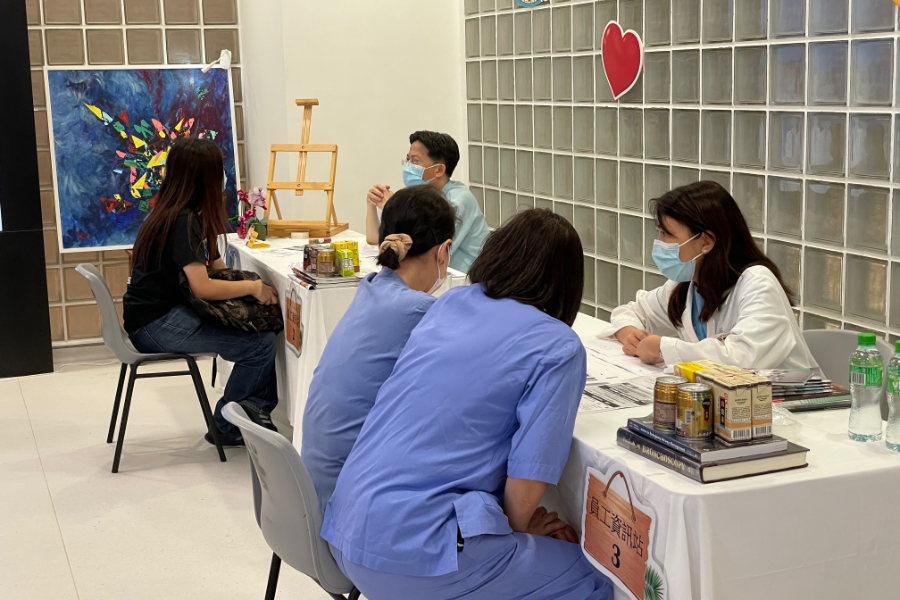
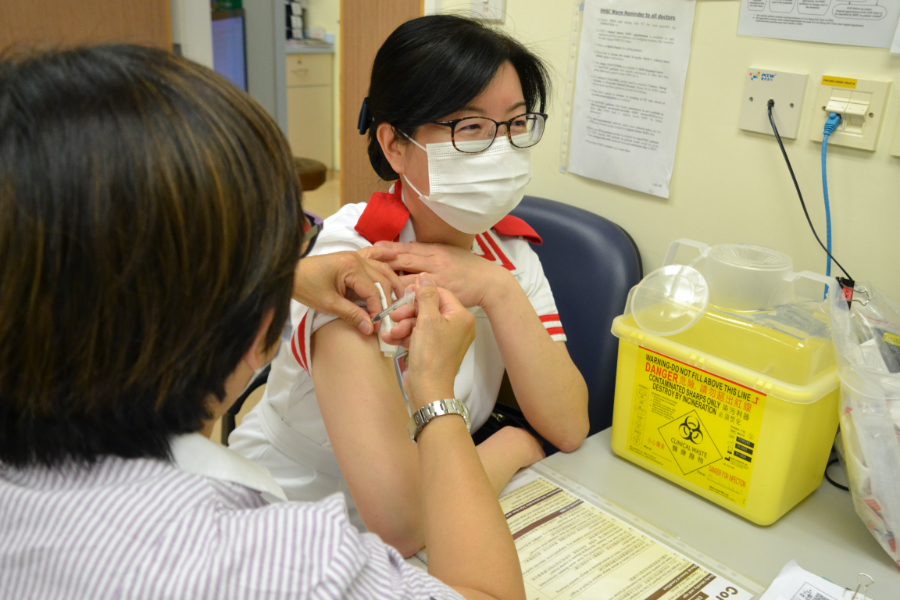

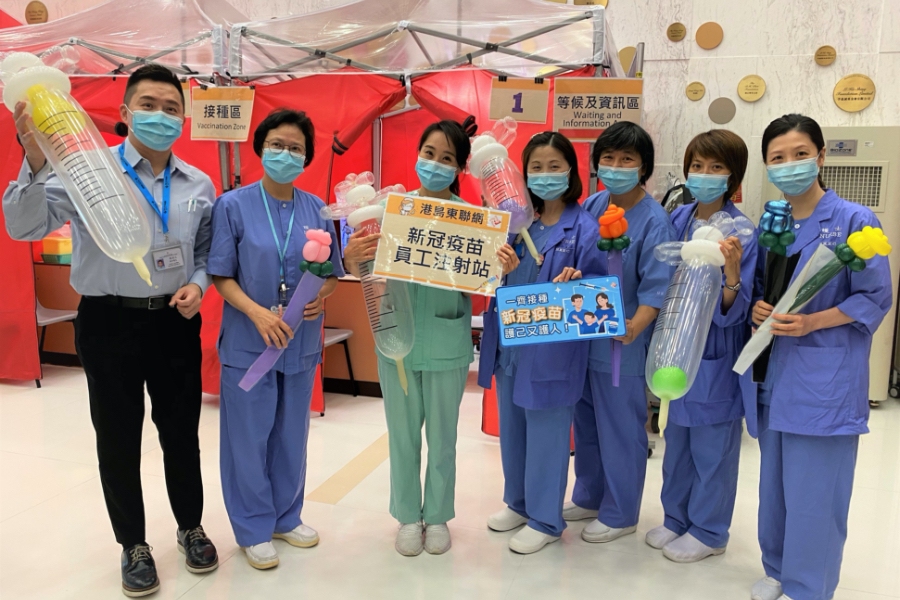
A multi-pronged approach to facilitate staff vaccination
The world has been driving up the vaccination rate among public. Dr Raymond Lai says the vaccination rate for the first dose among colleagues has recently increased from around 200 to 300 people a day in late May to around 500 to 600 a day in June, and some staff clinics are almost fully booked. The introduction of ‘Authorised Leave for Vaccination’ in line with the government’s initiative is one of the major incentives, he believes. Under this arrangement, colleagues are entitled to a day of authorised leave for each vaccination dose received before 31 August.
Past experience in promoting flu jab - including holding talks in different hospitals and departments and responding effectively to queries and misunderstandings - has been a good reference for formulating promotion strategies for COVID-19 vaccination. A number of measures have been introduced to bring greater convenience to colleagues, Dr Lai adds, such as setting up depots in hospitals and staff clinics, as well as arranging transport for staff going to Community Vaccination Centres.
Past experience in promoting flu jab - including holding talks in different hospitals and departments and responding effectively to queries and misunderstandings - has been a good reference for formulating promotion strategies for COVID-19 vaccination. A number of measures have been introduced to bring greater convenience to colleagues, Dr Lai adds, such as setting up depots in hospitals and staff clinics, as well as arranging transport for staff going to Community Vaccination Centres.
Speeding up the vaccination drive
Expert advice
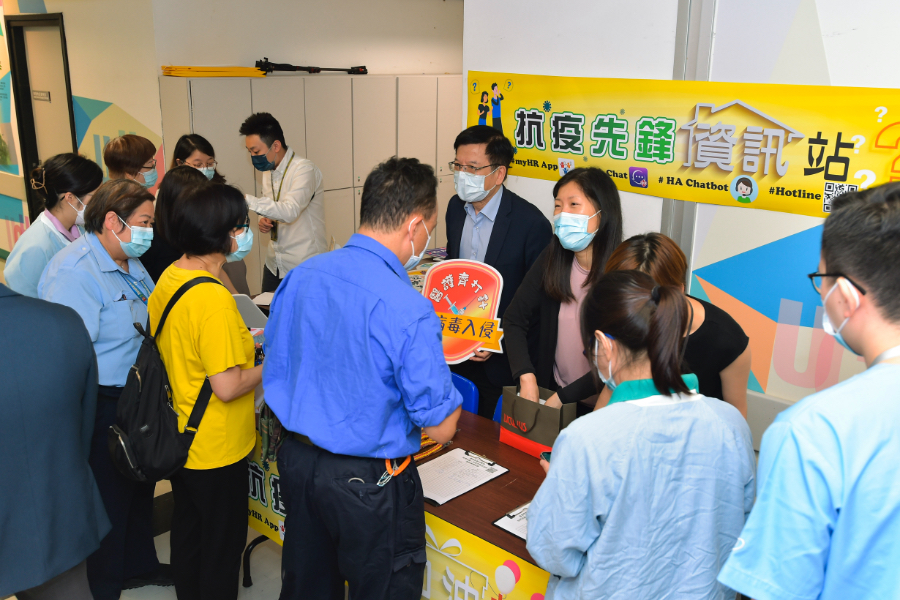
The HA Head Office and clusters have set up virtual help desks and booths with representatives from different departments including infection control, medicine, pharmacy, and nursing, on hand to answer queries on vaccine-related issues and to help colleagues with arrangements and bookings.
Heartfelt support
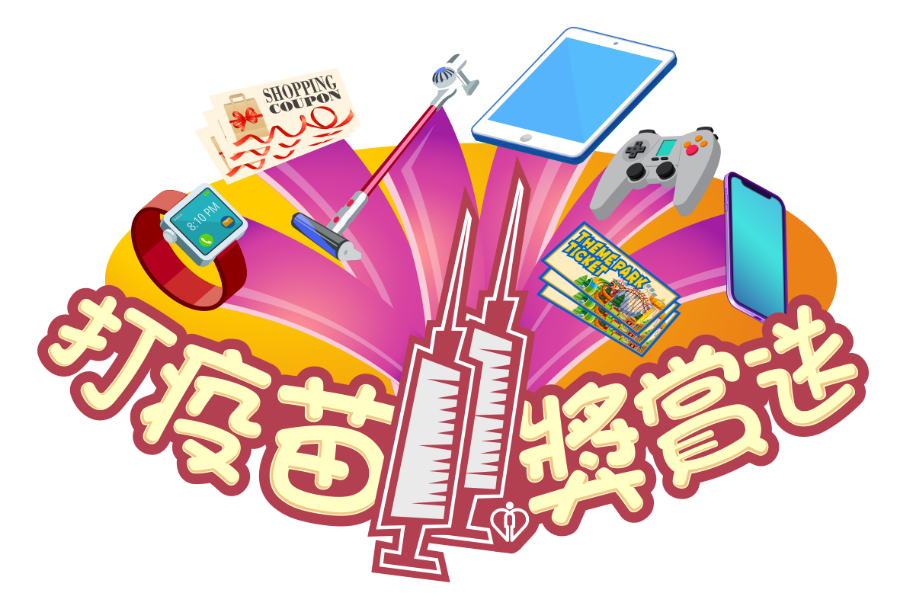 A nine-week lucky draw with prizes worth over HK$1 million has been launched as a way to thank colleagues for getting vaccinated to help ensure the protection of their colleagues and patients. Limited edition badges will also be given out as souvenirs, and awards will be given to the three acute and three non-acute hospitals with the highest rates of vaccination. Some clusters have also handed out snacks, drinks, and gifts to vaccinated staff.
A nine-week lucky draw with prizes worth over HK$1 million has been launched as a way to thank colleagues for getting vaccinated to help ensure the protection of their colleagues and patients. Limited edition badges will also be given out as souvenirs, and awards will be given to the three acute and three non-acute hospitals with the highest rates of vaccination. Some clusters have also handed out snacks, drinks, and gifts to vaccinated staff.
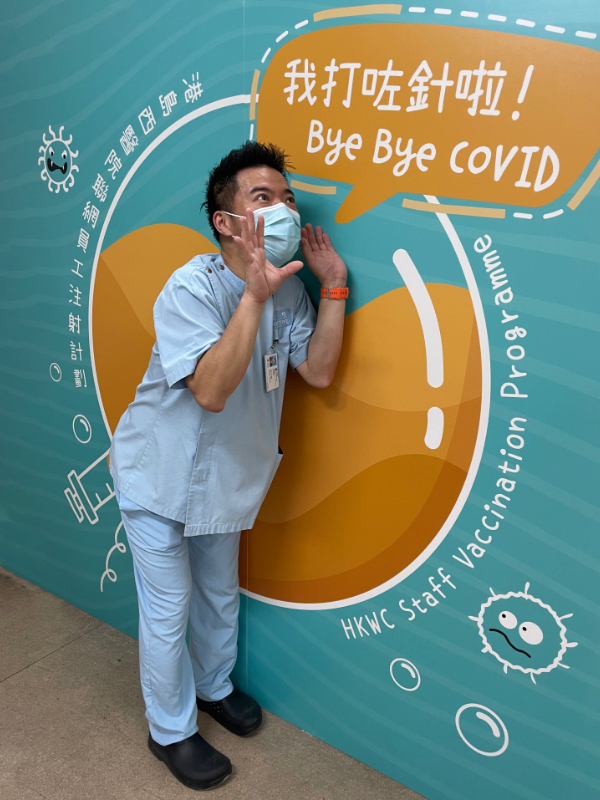 Different clusters have prepared photo boards, props or slogans for vaccinated staff to take photos and post messages of encouragement.
Different clusters have prepared photo boards, props or slogans for vaccinated staff to take photos and post messages of encouragement.
The clusters have also produced videos to promote the vaccination programme. Colleagues can browse the intranet page ‘Covid-19 Vaccination’ under ‘Updates for COVID-19’ and click on ‘Our committed staff’:(http://ha.home/goto/COVID-19_vaccination)
 A nine-week lucky draw with prizes worth over HK$1 million has been launched as a way to thank colleagues for getting vaccinated to help ensure the protection of their colleagues and patients. Limited edition badges will also be given out as souvenirs, and awards will be given to the three acute and three non-acute hospitals with the highest rates of vaccination. Some clusters have also handed out snacks, drinks, and gifts to vaccinated staff.
A nine-week lucky draw with prizes worth over HK$1 million has been launched as a way to thank colleagues for getting vaccinated to help ensure the protection of their colleagues and patients. Limited edition badges will also be given out as souvenirs, and awards will be given to the three acute and three non-acute hospitals with the highest rates of vaccination. Some clusters have also handed out snacks, drinks, and gifts to vaccinated staff.
Capturing the moment
 Different clusters have prepared photo boards, props or slogans for vaccinated staff to take photos and post messages of encouragement.
Different clusters have prepared photo boards, props or slogans for vaccinated staff to take photos and post messages of encouragement.
The clusters have also produced videos to promote the vaccination programme. Colleagues can browse the intranet page ‘Covid-19 Vaccination’ under ‘Updates for COVID-19’ and click on ‘Our committed staff’:(http://ha.home/goto/COVID-19_vaccination)